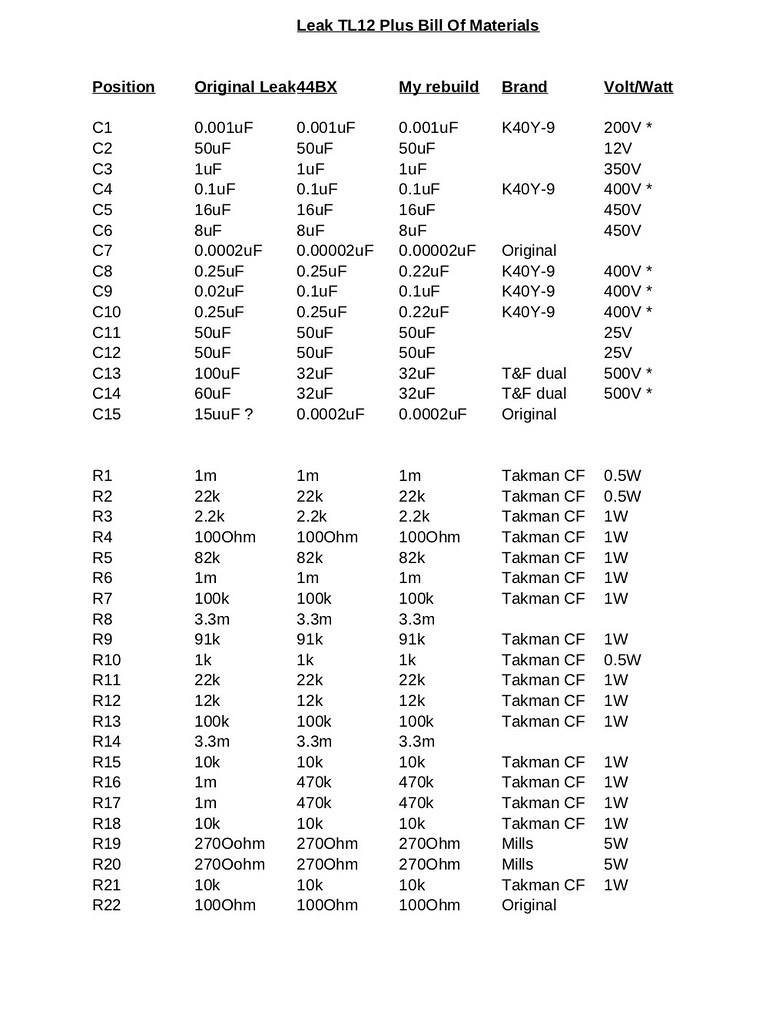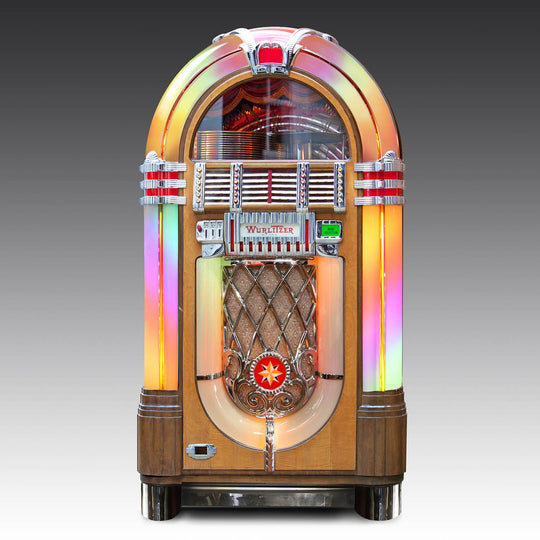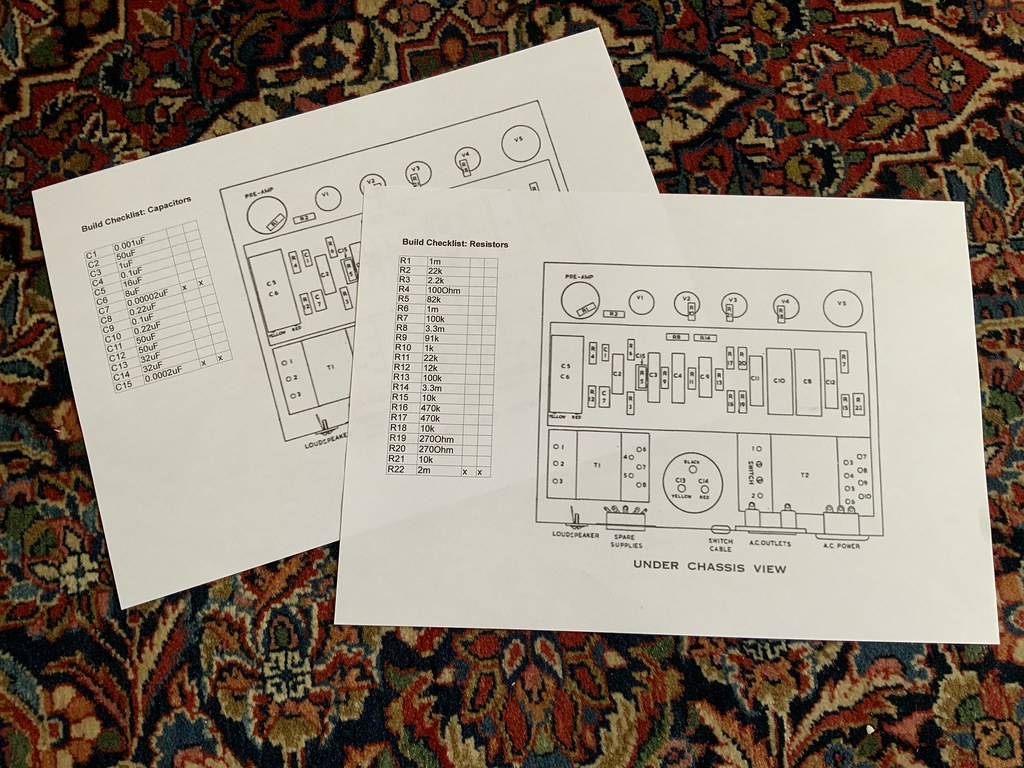Tony L
Administrator
Thanks. I’ve sourced some K40Y-9s for C1. 200V seems the only ones available, but I think that’s what’s in the S20. R5 is interesting, no idea why that is wrong. Both schematics say 82k there so no ambiguity. I’ll leave C15 and C7 alone for the time being if they are likely good. Aside from those two, the 0.22uF, 0.1uF and 1000pF K40Y-9s I think the rest are all polarised electrolytics. I’ll post another proper bill of materials before putting in an order as I’m still a little confused as to voltage and Wattage.
For me this is the hard bit. I basically need to reduce the whole process to an Airfix kit level of simplicity in advance. Once I have it at a ‘solder this bit here this way round’ level of documentation I know I can do it, and do it neatly! I’m not doing anything until I’ve got that nailed down, so bill of materials first!
Any views on fuses? These have the very old little fuses in the voltage selector plugs in the top of the mains transformers. They are 2A and both rather crusty and corroded. I’m pretty sure they are original, i.e. they didn’t offer any protection when the amps apparently got into trouble. I’ve ordered some new fuses (15mm ones do fit, despite not being ‘right’), and I’m thinking of trying a 1A fuse there to see if it works (I have some). I assume the 2A was for the thing under full load, e.g. also powering a preamp? I guess it will either blow or work! I’ve got 2A fuses on the way so nothing lost if it does.
I also notice in both these amps Harold’s magic green resistor couldn’t ‘safety drop’ as the eyelets aren’t cut through the way they are on my S20. I’ve no idea if it ever actually worked/desoldered itself in a failure mode, but it clearly can’t here if it is properly through the tag-board eyelets. I’ll likely address that.
For me this is the hard bit. I basically need to reduce the whole process to an Airfix kit level of simplicity in advance. Once I have it at a ‘solder this bit here this way round’ level of documentation I know I can do it, and do it neatly! I’m not doing anything until I’ve got that nailed down, so bill of materials first!
Any views on fuses? These have the very old little fuses in the voltage selector plugs in the top of the mains transformers. They are 2A and both rather crusty and corroded. I’m pretty sure they are original, i.e. they didn’t offer any protection when the amps apparently got into trouble. I’ve ordered some new fuses (15mm ones do fit, despite not being ‘right’), and I’m thinking of trying a 1A fuse there to see if it works (I have some). I assume the 2A was for the thing under full load, e.g. also powering a preamp? I guess it will either blow or work! I’ve got 2A fuses on the way so nothing lost if it does.
I also notice in both these amps Harold’s magic green resistor couldn’t ‘safety drop’ as the eyelets aren’t cut through the way they are on my S20. I’ve no idea if it ever actually worked/desoldered itself in a failure mode, but it clearly can’t here if it is properly through the tag-board eyelets. I’ll likely address that.





